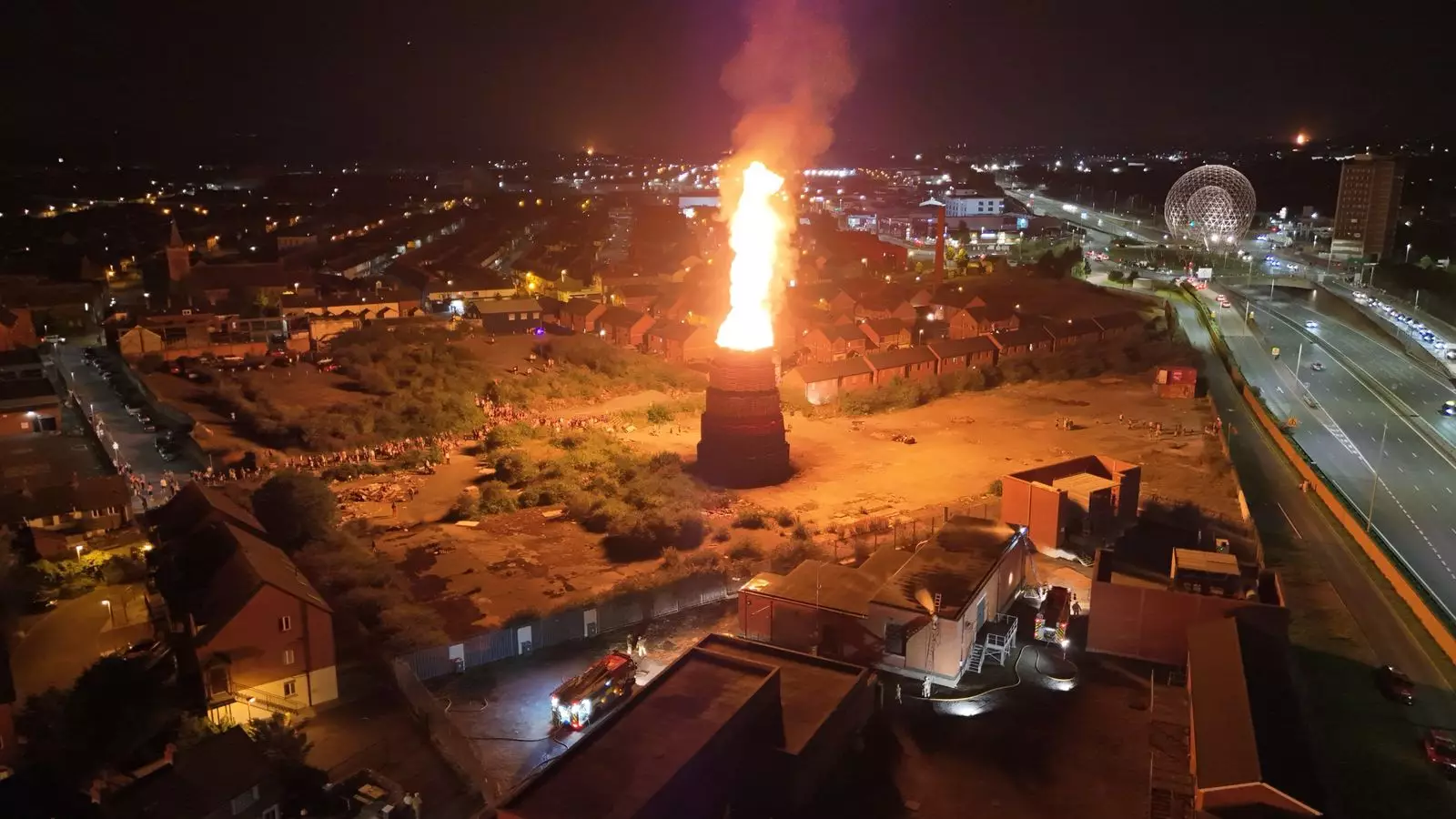In Northern Ireland, the annual spectacle of bonfires on the Eleventh Night encapsulates a complex message—a legacy rooted in history, identity, and contentious politics. While for some, these towering fires symbolize cultural pride and remembrance, they also expose profound societal divides that threaten community cohesion. The recent events underscore a pattern where tradition, instead of fostering unity, often amplifies tension and environmental risk. The very act of lighting hundreds of bonfires, some deliberately at sites containing hazardous materials like asbestos, reveals a reckless disregard for safety and environmental integrity that cannot merely be dismissed as cultural expression. This practice, cloaked in historical significance, must be critically reassessed in a modern context where public health and social harmony are paramount.
Broader Societal Ramifications and the Erosion of Public Trust
The government’s measured efforts to moderate these celebrations frequently fall short amid a frail political landscape marked by deep-seated divisions. The decision to allow the bonfire at an asbestos-laden site illustrates a disturbing tendency to prioritize tradition over safety, even in the face of stark warnings from officials. The environment minister’s expression of disappointment hints at a recognition that these actions jeopardize community safety and erode government credibility. Moreover, the escalation of emergency incidents—over 70 bonfire-related calls and nearly 200 operational responses in a single night—reflects the strain these events place on emergency services. This recurrent pattern suggests that, rather than serving as a unifying cultural symbol, bonfire night is increasingly becoming a catalyst for chaos, environmental damage, and a loss of faith in authorities’ ability to enforce safety standards.
The Provocative Nature of Symbols and Their Political Ramifications
Beyond the physical dangers, the incendiary displays of symbolism—such as effigies of political figures or provocative lyrics—expose the deeply entangled nature of history and identity politics in Northern Ireland. Burning effigies of migrants or even inflammatory slogans challenging political opponents intensifies feelings of division, often inflaming passions rather than soothing tensions. These displays often serve as flashpoints, exacerbating community tensions during an already delicate period marked by parade sensitivities and security concerns. The decision to feature such provocative material, especially near sensitive areas, reflects a troubling casualness toward the potentially volatile consequences, making the practice less about cultural expression and more about asserting dominance through spectacle.
The Need for Radical Change and Responsible Leadership
What these events reveal most starkly is the urgent need for a more responsible approach—one that reconciles cultural heritage with contemporary social values. It is problematic that authorities seem unable or unwilling to take decisive action against dangerous bonfires, even when they threaten public safety and environmental health. A radical reevaluation of what it means to honor tradition is necessary; one that prioritizes community well-being over symbolic gestures that have historically fostered division. Leaders must recognize that cultural practices are not immutable; they evolve, and in doing so, they must reflect the collective desire for a peaceful, inclusive society. This entails stricter regulations, better community engagement, and fostering dialogue that bridges divides rather than perpetuating them through spectacle and provocation.
Northern Ireland’s bonfire tradition exemplifies how cultural practices, when uncritically maintained, can undermine societal progress and safety. The reckless lighting of hazardous bonfires and provocative displays lack foresight and show a blatant disregard for the community’s safety and environmental sustainability. Moving forward, there must be a collective reimagining of these rituals—shaping them into symbols of unity and respect rather than division and danger. Only through proactive, inclusive leadership and a willingness to confront uncomfortable truths can society hope to preserve its cultural identity while ensuring that it does not come at the expense of safety, health, and social harmony.


Leave a Reply